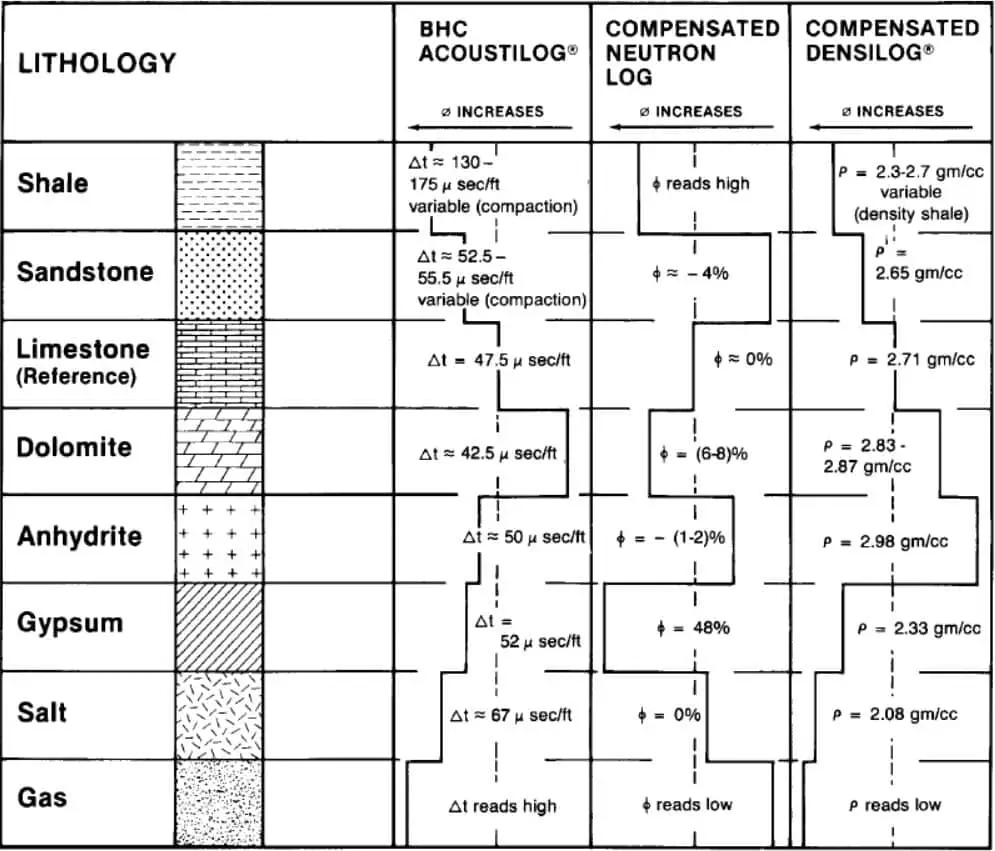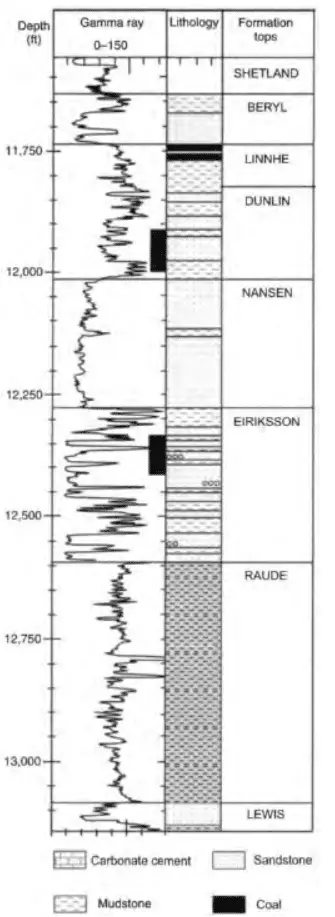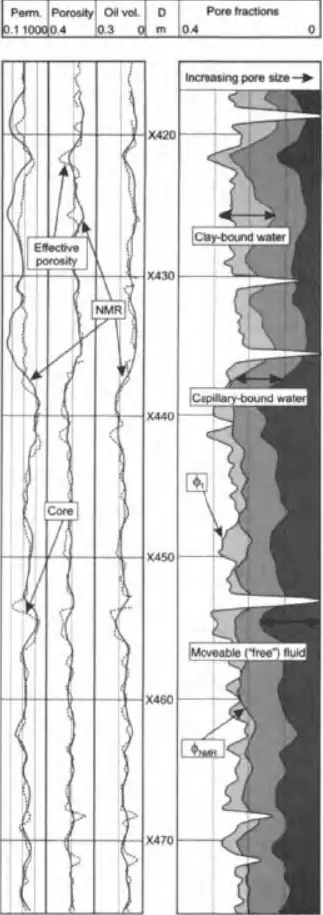There are many different types of well logging, including but not limited to, resistivity, sonic, caliper, electric, seismic, and radioactivity. Each type of well logging involves a different process and provides different information about the subsurface. All types of well logging have their own unique benefits and drawbacks that make them more or less ideal for different types of wells and different situations.
Electric logs measure the electrical conductivity of the rock and fluid while radioactivity logs measure the natural radioactivity of the rocks. Unlike the electric and radioactivity, mud logging is used to measure the properties of the rock and fluid in the borehole. In wireline logging, a device called a ‘logging tool’ is lowered into the well on a wireline. The tool is then pulled back up the well, recording information about the well as it goes.
Importance of well logging
There are many benefits to well logging. A well log is a record of the changes in rock formations and fluid content that are encountered while drilling a well. The importance of well logging data in reservoir characterization and development cannot be overstated. Accurate well logging data is critical in order to understand the subsurface geology, which in turn is necessary for finding and developing oil and gas reservoirs. Without well logging data, it would be very difficult, if not impossible, to find and develop these reservoirs. In addition, well logging data is also important in monitoring reservoir performance and identifying potential problems.
Electric well logs
An electric well log, geophysical well log type, is a record of the electrical resistivity of the rocks surrounding a well bore. Electric well logs uses an electrical pulse to measure resistivity. The resistivity of the rocks is a measure of their ability to conduct electricity. Electric well logs, or e-logs determine the lithology of a borehole and the location of hydrocarbon reservoirs. Hydrocarbon reservoirs are typically porous rocks that contain oil or natural gas. E-logs are also used to determine the porosity of rocks and the permeability of reservoir rocks.
The log is usually recorded on paper or film and represents a cross-section of the subsurface along the well bore. The resistivity of the rocks is dependent on the pore fluid content, so electric well logs can be used to estimate the porosity of the subsurface. Electric well logs can also be used to estimate the permeability of the subsurface, which is important for estimating the potential productivity of a hydrocarbon reservoir. Electric well logs can also be used to determine the depth of formations and to locate potential fractures.
Resistivity well logs

Resistivity well logs are a type of geophysical well log that is used to determine the resistivity of the surrounding rocks. The resistivity well log is a tool that is used to help determine the porosity of the rocks. It is one of the most commonly used logging tools in the oil and gas industry. The porosity of the rocks is a measure of the amount of space that is available for the flow of fluids. The resistivity well log is a very important tool for geologists since it helps them understand the subsurface.
The main use of resistivity logs is to identify hydrocarbon-bearing reservoirs. The higher the resistivity of a material, the greater the opposition to the current flow. The resistivity of a material is not always constant but can vary with the applied voltage and the presence of other materials.
Types of resistivity logs
There are several types of resistivity logs. The common types of resistivity logs include sonic, induction, laterolog, normal resistivity, and microlog logs. Each has its own strengths and weaknesses. Resistivity tools consist of four or more electrodes that are mounted on a pad. The tool is lowered into the borehole on a wireline. The spacing between the electrodes is varied to provide measurements over a range of depths. The most common type is the induction logging tool. Induction logs are the most accurate but they are also the most expensive.
The induction and laterolog tools measure the resistivity of the formation by inducing a current in the formation and measuring the voltage across the formation. The induction tool consists of three electrodes: a transmitter electrode, a receiver electrode, and a grounding electrode. A normal resistivity tool is an eight-inch tool that measures the resistivity of the formation between the tool and the surface of the earth. The microlog is a tool that measures the resistivity of the formation in the borehole.
Spontaneous (SP) log
Spontaneous (SP) log in well logging is a commonly used method to investigate the reservoir properties of oil and gas fields. The purpose of spontaneous (SP) log in well logging is to determine the areas of the reservoir that are in contact with the well and to predict the reservoir pressure near the well. SP logs are run in all wells, both oil and gas, to determine the continuity of the reservoir and to estimate the reservoir pressure. The pressure data from SP logs can be used to calibrate other pressure measurements in the well, such as bottom pressure and drill string pressure.
SP logs, therefore, provide information about the rocks through which the borehole has been drilled, including the type of rock, the porosity of the rock, the permeability of the rock, and the fluid content of the rock. They also determine the location of hydrocarbon-bearing reservoirs and estimate the size of those reservoirs. Additionally, SP logging is used to identify zones of water-bearing reservoir rocks and to determine the depth of the water table.
Sonic logging
There are many different types of sonic logging, but all of them share the same basic principle: using sound waves to measure the properties of the formations through which the sound waves travel. The most common type of sonic logging is called compressional-wave logging, which measures the travel times of compressional waves—sound waves that travel parallel to the direction of the borehole. Another type of sonic logging, called shear-wave logging, and measures the travel times of shear waves—sound waves that travel perpendicular to the direction of the borehole.
Under sonic logging the sound waves are generated by a vibrating pad that is lowered into the borehole on a wireline. The waves travel through the rock and are reflected back to the surface where they are recorded by a sensor. Sonic logging can be used to measure the porosity, density, and elastic properties of the rock.
Density logging

Density logging is the process of measuring the density of a fluid in a well or a material using a device called a densitometer. Density logging uses a gamma ray source and detector to measure the attenuation of the gamma rays as they travel through the fluid. The density of the fluid is then calculated from the attenuation. Density logging is used to determine the porosity of the rock surrounding the borehole and to identify fluid-filled fractures, lithologies.
Density logging technique is well suited to lithology determination in clastic reservoirs and has been used extensively in the oil industry. The basic principle in density logging is that the denser a formation is, the more gamma rays it will absorb. The data obtained is then recorded on a graph.
Neutron porosity logs

A neutron porosity log is a type of well logging that uses neutrons to estimate the porosity of a rock. To achieve this, neutron porosity logs use radioactive isotopes to measure the porosity. This technique is often used in oil and gas exploration to determine the potential productivity of a reservoir. The porosity of a rock is a measure of the void space within the rock and is an important factor in the ability of a reservoir to store and transport fluids. Neutron porosity logging measures the number of neutrons that are scattered by the rock to calculate the porosity of the rock.
Geochemical logs
Geochemical logs are a type of well logging. They are used to measure the chemical composition of rocks and fluids in order to determine their lithology, porosity, and fluid type surrounding a well. Apart from providing important information about the subsurface, geochemical logs can provide important information by helping interpret other geophysical data.
In geochemical logs the measurements made are related to the chemical composition of the rocks through which the well has been drilled. Geochemical logs can be used to identify potential hydrocarbon reservoirs and to evaluate reservoir fluid properties. The logs can also be used to identify changes in the lithology of the rocks.
Gamma ray logs

Gamma ray logs are an important tool in well logging. This is done by measuring the natural gamma rays that are emitted by the formation. Geologists and other scientists use gamma ray logs to study the formation and composition of the earth. Gamma ray logs measure the natural radioactivity of rocks and minerals, which is caused by the presence of uranium, thorium, and potassium. They therefore help determine the type of rock and the amount of radioactivity in the rock. Gamma ray logs can also be used to study the structure of the earth.
Gamma ray logs measure the natural radioactivity of the formations surrounding the well. The radiation is measured in API units. In the oil and gas industry, gamma logs are used to identify lithology and estimate shale volume. The logs are used to identify lithologic units and to estimate porosity. In addition, they can be used to monitor fluid movements in the reservoir.
Nuclear magnetic resonance (NMR) logging

Nuclear magnetic resonance (NMR) logging in well logging, is the recording of the resonance absorption of radio waves by nuclei in response to an applied magnetic field. The log is usually run while drilling, but can also be performed after the drilling operation is completed. The main use of NMR logging is to obtain information about the porosity and fluid content of the formations. NMR logging can be used to obtain information about the permeability of the formations, to determine the position of fractures, and to monitor the movement of fluids in the formations.
Nuclear magnetic resonance (NMR) logging, or simply NMR logging, is related to, but distinct from, NMR imaging, which is used for medical diagnosis and other purposes. NMR logging was first proposed in the early 1970s, and the first field measurements were made in the late 1970s. NMR logging has seen increasing use in the oil and gas industry since the early 1990s. NMR logging is a non-invasive, safe, and environmentally friendly well logging technique that can be used in both open and cased wells.
Caliper log

Logging while drilling (LWD) is a technology used in the oil and gas industry. LWD tools are used to measure the characteristics of a borehole and the surrounding rock formations. The most common LWD tool is the caliper log. A caliper log is a device that measures the diameter of a borehole.
A caliper is a tool that consists of two arms that are connected at one end. The other end of each arm is connected to a measuring device. The caliper log provides a record of the borehole diameter along the length of the well bore. This information is used to determine the size of the well bore, the location of potential trouble spots, and the type of equipment that can be used in the well. The caliper log is also used to determine the amount of fluid that can be pumped through the well bore.
Spectral noise logging (SNL)
In well logging, spectral noise logging (SNL) is a type of measurement that quantifies the low-frequency noise in the recorded signal. SNL has been used in the oil and gas industry for many years and is a valuable tool for identifying reservoir properties. SNL can be used to identify the presence of fluid in the reservoir, to estimate the porosity of the rock, and to determine the permeability of the reservoir.
SNL is typically used in conjunction with other logging methods, such as resistivity logging, to improve the accuracy of estimates of rock properties. SNL uses a broadband signal to measure the spectral noise from a logging tool. The signal is then processed to obtain information about the tool and the borehole. SNL can be used to obtain information about the borehole environment, the tool itself, and the logging process. The main advantage of SNL is that it can be used to identify formations that are not easily identified by other methods, such as seismic methods.
References
Bhattacharya, P. (2012). Direct current geoelectric sounding: Principles and interpretation.
Darling, T. (2005). Well logging and formation evaluation. Elsevier.
Ellis, D. V., & Singer, J. M. (2007). Well logging for earth scientists (Vol. 692). Dordrecht: Springer.
Li, H., & Wang, L. (2018). Fast modeling and practical inversion of laterolog-type downhole resistivity measurements. IEEE Transactions on Geoscience and Remote Sensing, 57(1), 120-127.
Maslennikova, Y. S., Bochkarev, V. V., Savinkov, A. V., & Davydov, D. A. (2012, October). Spectral noise logging data processing technology. In SPE Russian Oil and Gas Exploration and Production Technical Conference and Exhibition. OnePetro.
Parasnis, D. S. (2012). Principles of applied geophysics. Springer Science & Business Media.
Reinecker, J., Tingay, M., & Müller, B. (2003). Borehole breakout analysis from four-arm caliper logs. World stress map project, 1-5.
Tiab, D., & Donaldson, E. C. (2015). Petrophysics: theory and practice of measuring reservoir rock and fluid transport properties. Gulf professional publishing.

